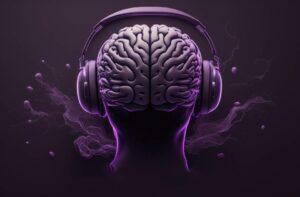The brainstem, a pivotal structure within the central nervous system, bridges the brain to the spinal cord. It nestles in the posterior part of the brain, comprising three main sections: the midbrain, the pons, and the medulla oblongata.
The midbrain, perched atop the brainstem, participates in functions like vision, hearing, motor control, sleep and wake cycles, alertness, and temperature regulation. It houses cranial nerves III (oculomotor) and IV (trochlear), which govern eye movements. Also located here are the superior and inferior colliculi involved in auditory and visual processing.
Directly below the midbrain lies the pons, a bridge connecting different brain regions and facilitating message transmission. Cranial nerves V (trigeminal), VI (abducens), VII (facial), and VIII (vestibulocochlear) reside here, controlling sensations from the face, chewing movements, facial expressions, and the sense of balance and hearing.
At the bottom of the brainstem, the medulla oblongata connects the brain to the spinal cord. It holds sway over vital functions, such as heart rate, blood pressure, and breathing. The medulla hosts cranial nerves IX (glossopharyngeal), X (vagus), XI (accessory), and XII (hypoglossal), managing swallowing, speech, and neck movements.
Within the brainstem, the reticular formation is a network of nerve pathways that extend from the medulla through the pons and into the midbrain. This intricate structure plays a crucial role in maintaining consciousness and regulating the sleep-wake cycle. It also assists in regulating heart rate, blood pressure, and breathing, and modulates pain signals, possibly influencing an individual's perception of pain.
Despite its relatively small size, the brainstem performs myriad vital functions. It acts as a conduit for information passing between the body and the cerebral cortex, controls many basic life functions, such as heart rate, breathing, sleeping, and eating.
In the event of damage to the brainstem, severe consequences can arise due to its control over vital functions. For example, a brainstem stroke can lead to loss of motor control, difficulties with sensation and speech, and in severe cases, locked-in syndrome, a condition where an individual is conscious but cannot move or communicate due to nearly total voluntary muscle paralysis.
The brainstem is a focus of numerous studies within neurology and psychology. Research into the brainstem's role in controlling sleep and arousal contributes to a better understanding of disorders such as insomnia and narcolepsy.
Neuroimaging studies often examine the brainstem to gain insights into various neurological and psychiatric conditions. For instance, abnormalities in the brainstem are associated with conditions such as Parkinson's disease and multiple sclerosis.
An understanding of the functions of the brainstem and its interaction with other brain parts can also inform therapeutic approaches. For example, deep brain stimulation, a surgical procedure used to treat conditions like Parkinson's disease and depression, often targets structures within the brainstem.
Brainstem
The main functions of the brainstem include:
* Regulating vital life-sustaining functions: The brainstem controls essential functions such as heart rate, blood pressure, and respiration.
* Relaying nerve impulses: The brainstem serves as a communication pathway between the brain and the rest of the body, transmitting sensory and motor information.
* Regulating sleep and arousal: The brainstem plays a role in the regulation of sleep-wake cycles and maintaining an appropriate level of arousal.
* Coordinating reflexes: The brainstem is responsible for coordinating reflexes related to balance, swallowing, coughing, and other essential actions.
* Regulating vital life-sustaining functions: The brainstem controls essential functions such as heart rate, blood pressure, and respiration.
* Relaying nerve impulses: The brainstem serves as a communication pathway between the brain and the rest of the body, transmitting sensory and motor information.
* Regulating sleep and arousal: The brainstem plays a role in the regulation of sleep-wake cycles and maintaining an appropriate level of arousal.
* Coordinating reflexes: The brainstem is responsible for coordinating reflexes related to balance, swallowing, coughing, and other essential actions.
The brainstem is involved in the regulation of emotional responses and stress reactions through its connections with other brain regions, such as the limbic system and the hypothalamus. When the brain perceives a stressor, the brainstem helps initiate the body's stress response, activating the sympathetic nervous system and releasing stress hormones like adrenaline and cortisol. This prepares the body for the "fight or flight" response, enabling individuals to cope with perceived threats or challenges.
Related Semantic Entities for Brainstem
